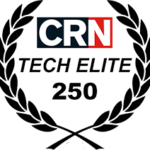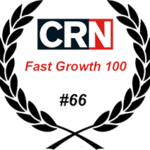There’s nothing normal about any of this. Many in the workforce, who never in a million years would have thought that they’d be working from home persistently, are now trying to keep the door closed from loud children and pets who are seemingly much happier now that you’re around so often. In fact, for many of these people working remotely, the phrase that sums up most of their professional life in 2020 is, simply, “You’re on mute.”
In the updated edition (from October) of the AFCOM State of the Data Center report, we found that more than half of those with changes in their workplace (54%) believe their workforce’s current makeup will become permanent. In probing a bit further, the nearly 20% that say they weren’t sure may be falling into that remote work category as well.
Looking more broadly, several large enterprises have either made working remotely permanent or extended indefinitely. The list includes Google, Microsoft, REI, Uber, American Express, Twitter, Square, Facebook, and many others. In a survey from 451 research, 67% of respondents expect that their work-from-home policies will become permanent, or at least remain in place for the long term.
That’s a lot of people working from home. Quite possibly, you included. People face an entirely new paradigm when it comes to doing your job productively, from home. Some are seasoned pros at this, but this is an entirely new way to work for many others. People aren’t the only ones trying to figure all of this out.
For companies of all sizes, the big question becomes clear-cut: How do I keep all of these people productive and happy?
In many, if not almost all of those cases, technology holds the key.
Innovation is Now About Survival
For the past few years, one of the leading buzz words floating around was ‘innovation.’ For some, it was just background chatter. For who listened and understood what it meant to innovate based on the context of their own business and how this impacts them in the future are the ones that are surviving right now.
The organizations that adopted modernization efforts to support both business and user productivity were simply better equipped to support a remote workforce. They did all of this through the personalization of the user experience. They created a platform where settings, functions, features, and entire user environments were no longer dependent on a desktop and cubicle.
To truly personalize a workforce, here’s what some leaders did.
- Balancing cloud. Research studies have shown that the cloud isn’t here to kill the data center. Many workloads have experienced repatriation back into the data center from the cloud. There’s an indication in the industry that many leaders are finally finding the balance of what should live in a cloud and what should be at a data center. This balance also has massive impacts on how you personalize user experiences. The elasticity of the cloud can help you deliver applications, specific services, and even entire user experiences. Further, cloud services can be leveraged for things like SaaS apps, single sign-on, identity federation, and much more. Now, to unify all of this, we go to the next point.
- Human-centric experiences. Think about technology from your user’s perspective. That is, how are they consuming it? Technology leaders who saw productivity numbers actually go up focused on how the user was interacting with applications, resources, and content and then looked at ways to make it simpler. So, you could use aggregation portals that give users one point of entry for applications and resources that may have otherwise been scattered around. Or by leveraging tools like application virtualization and delivery (either cloud or on-premise) to create one centralized repository for critical apps.
Another key point is that many leaders also invested in multi-experience solutions. That is, working with technologies that would allow users to be productive regardless of the device they use. - A different perspective on security and managing risk. With so many users now working remotely, the workforce’s security has taken on a whole new meaning. Everything from risk management to controlling IT assets and inventory has been upended. Securing end-points (of any type), ensuring data in transit and rest is locked down, and preventing data loss are all key considerations. The good news is that security solutions can help secure that multi-experience initiative while still maintaining a great user experience. Personalizing the workforce may also mean personalizing user security. That might mean allowing for different types of two-factor authentication or using new technologies that only open a VPN for specific applications. Beyond traditional antimalware solutions, new security designs allow for far more flexibility in how users interact with their resources. This includes everything from network-level security to end-to-end encryption of cloud communication.
It’s easy to get lost going down the technology rabbit hole. But that doesn’t mean you can simply be complacent. When you examine innovation or even broader modernization efforts, you’ll need to take an introspective approach. That is, asking how new technology would impact your users and your organization. That is, innovation is based on context. This will also help you with the challenge of future-proof vs. burden-proof. Just because technology is new and shiny doesn’t always mean it’ll make your life easier. Working with good partners who help you navigate to get to the right solution will allow you to avoid technologies that turn out to be a burden.
Learn how Black Diamond Solutions takes a unique approach to IT, business, and the remote workforce by combining industy-leading solutions to create powerful user experiences.



